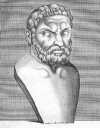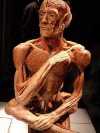英樂博客
學習英語,欣賞音樂。
正文
Article of the Day
 The Space PenMarketers of the Space Pen claim that the writing implement can be used in zero gravity, upside down, underwater, over wet paper, at any angle, and in extreme temperatures. The pen, which was invented by American industrialist Paul C. Fisher, uses pressurized ink cartridges to force thixotropic ink through its tungsten carbide ballpoint. Though standard ballpoint pens can be used in space, both the American and Russian space programs use Fisher's pen. Why is it dangerous to use pencils in space? More... |
Article of the Day provided by The Free Dictionary
Article of the Day
 Aron RalstonThe recently published book Between a Rock and a Hard Place chronicles the experiences of Aron Ralston, an American mountain climber who survived a nearly fatal hike in the Utah desert. While Ralston was canyoneering alone in May 2003, his right forearm became trapped by a falling boulder. Unable to lift the rock, Ralston was forced to amputate his own arm in order to free himself. How many days did Ralston wait before beginning the terrible operation? More... |
Article of the Day provided by The Free Dictionary
Article of the Day
 ThalesThales of Miletus, one of the Seven Wise Men of Greece, was a pre-Socratic philosopher and scientist. He is traditionally considered the first Western philosopher and a founder of geometry and abstract astronomy. As a philosophical materialist, Thales theorized that water was the first principle of all things. He speculated that the Earth floated on water, and so proposed an explanation for earthquakes. A capable astronomer, Thales is said to have predicted what celestial phenomenon in 585 BCE? More... |
Article of the Day provided by The Free Dictionary
Article of the Day
 BiomeA biome is a large community of plants and animals that occupies a distinct geographic region. Terrestrial biomes, typically defined by their climate and dominant vegetation, include grassland, tundra, desert, tropical rainforest, and deciduous and coniferous forests. The two basic aquatic biomes, freshwater and marine, can be further broken down into categories such as lakes and rivers or pelagic, benthic, and intertidal zones. At what latitudes does biodiversity generally increase? More... |
Article of the Day provided by The Free Dictionary
Article of the Day
 The Gleiwitz IncidentIn 1939, Nazi forces staged an attack on a German radio station and planted the bullet-riddled body of a Polish sympathizer at the scene, reporting the attack as the work of Polish saboteurs. The attack was part of a Nazi propaganda campaign called Operation Himmler, which involved a series of staged incidents intended to create the appearance of Polish aggression against Germany and provide a basis for the subsequent invasion of Poland. What was Hitler quoted as having said about the campaign? More... |
Article of the Day provided by The Free Dictionary
Article of the Day
 GroupthinkIn order to minimize conflict and avoid embarrassment, group members often refrain from promoting viewpoints that deviate from the apparent group consensus. This mode of thinking is known as "groupthink" and is characterized by extensive self-censorship among group members who unquestioningly believe in the morality of the group. Striving for unanimity without appraising alternative courses of action can often have dire consequences; what space shuttle disaster may be evidence of this? More... |
Article of the Day provided by The Free Dictionary
Article of the Day
 Bricks of TeaDried, compressed blocks of tea leaves have been used in Asia as a source of food, component of beverages, and form of currency for centuries. In Ancient China, tea was often mixed with binding agents?including flour, blood, and manure?to increase its durability, thus fortifying the tea brick against the physical demands of its use as currency. Siberian nomads preferred tea-brick currency over metal coins and continued to use the edible money until what period? More... |
Article of the Day provided by The Free Dictionary
Article of the Day
 Goethe's Theory of ColoursIn 1810, Johann Wolfgang von Goethe published his observations of color. Most physicists dispute the validity of his work because of his reification of darkness and explanation of color as the interplay between darkness and light. Goethe considered this work his magnum opus and it remains a remarkable catalogue of observations on color perception and color phenomena. What inspired Goethe to pursue his own study of color and challenge the widely accepted theories posited by Newton? More... |
Article of the Day provided by The Free Dictionary
Article of the Day
 The Tree-KangarooThese marsupials are generally found in the rainforests and mountainous regions of New Guinea and Queensland. They are related to the kangaroos endemic to Australia, with whom they share many similar features, including their large hind legs and long, narrow feet. In contrast to the kangaroo, however, these macropods live in trees, have the ability to move their hind legs independently of one another, and leap great distances from tree to tree. How far can a tree-kangaroo jump? More... |
Article of the Day provided by The Free Dictionary
Article of the Day
 Body WorldsGunther von Hagens's Body Worlds, a traveling exhibition of preserved human bodies and body parts, has been the subject of controversy since it opened in Tokyo in 1995. Developers claim that the exhibit uses only specimens from willing donors and is intended to educate laymen about the human body, but some see the project as denigrating the deceased, and religious groups have voiced objections to the public exhibition of human corpses. What technique is used to preserve the human tissue? More... |
評論
目前還沒有任何評論
登錄後才可評論.




